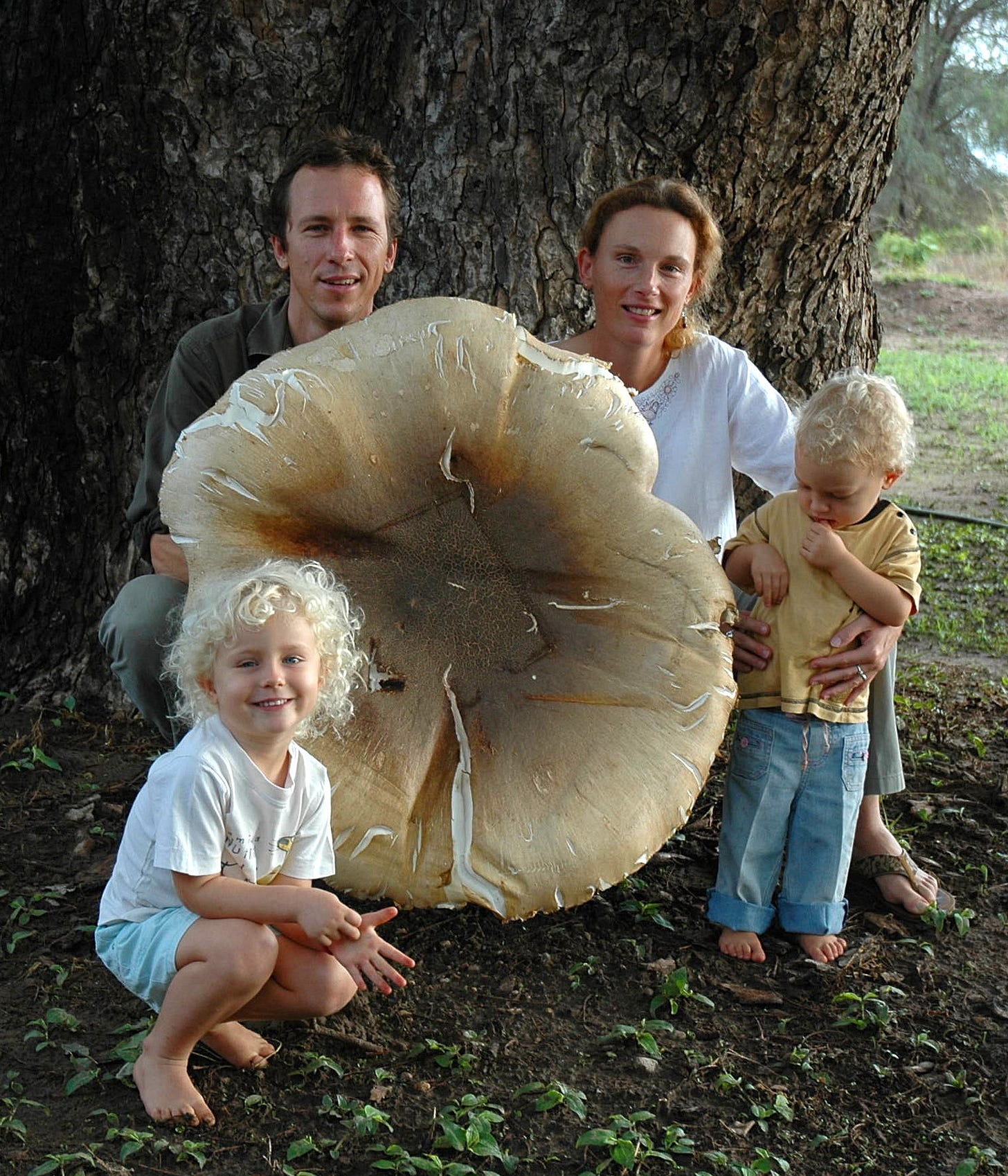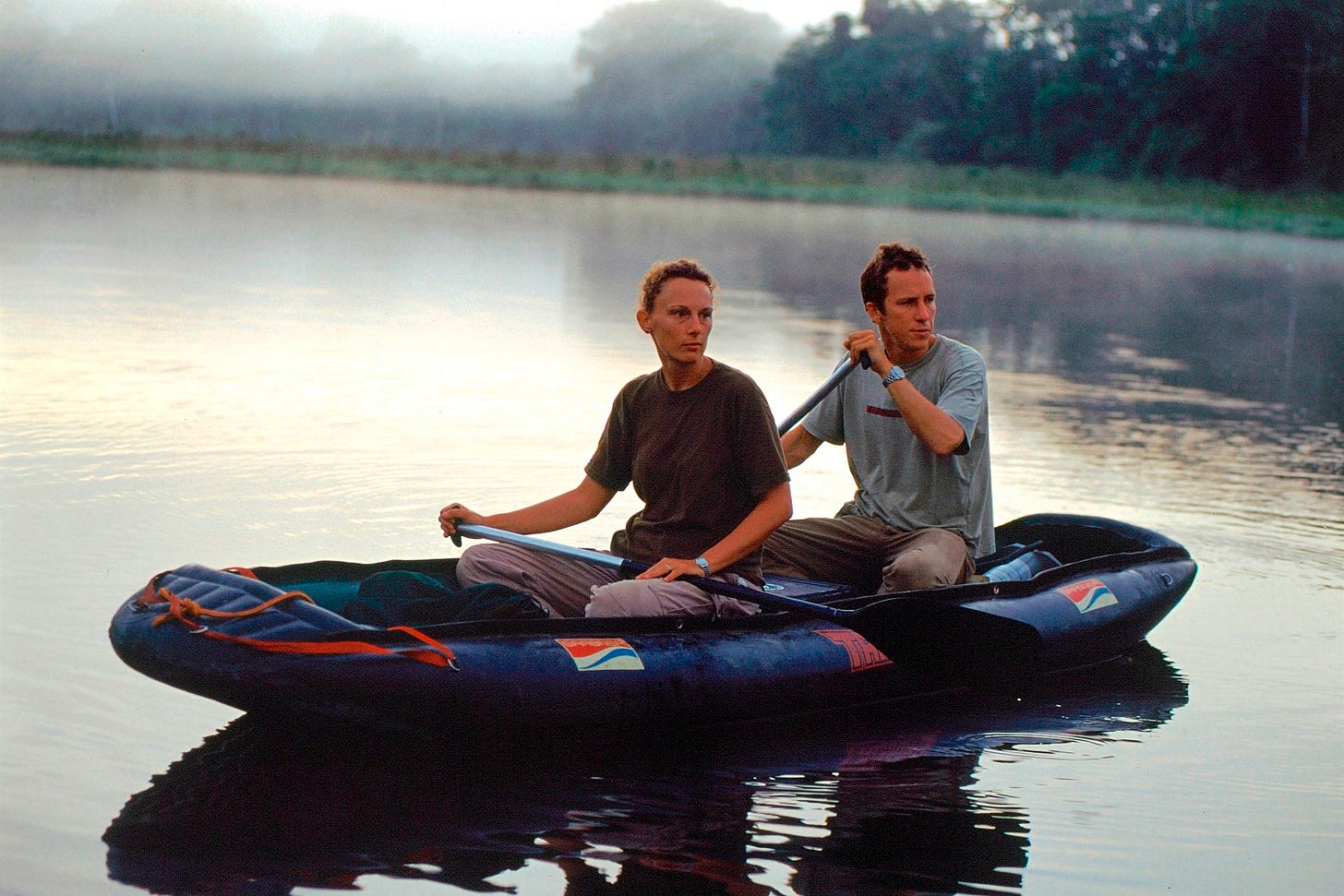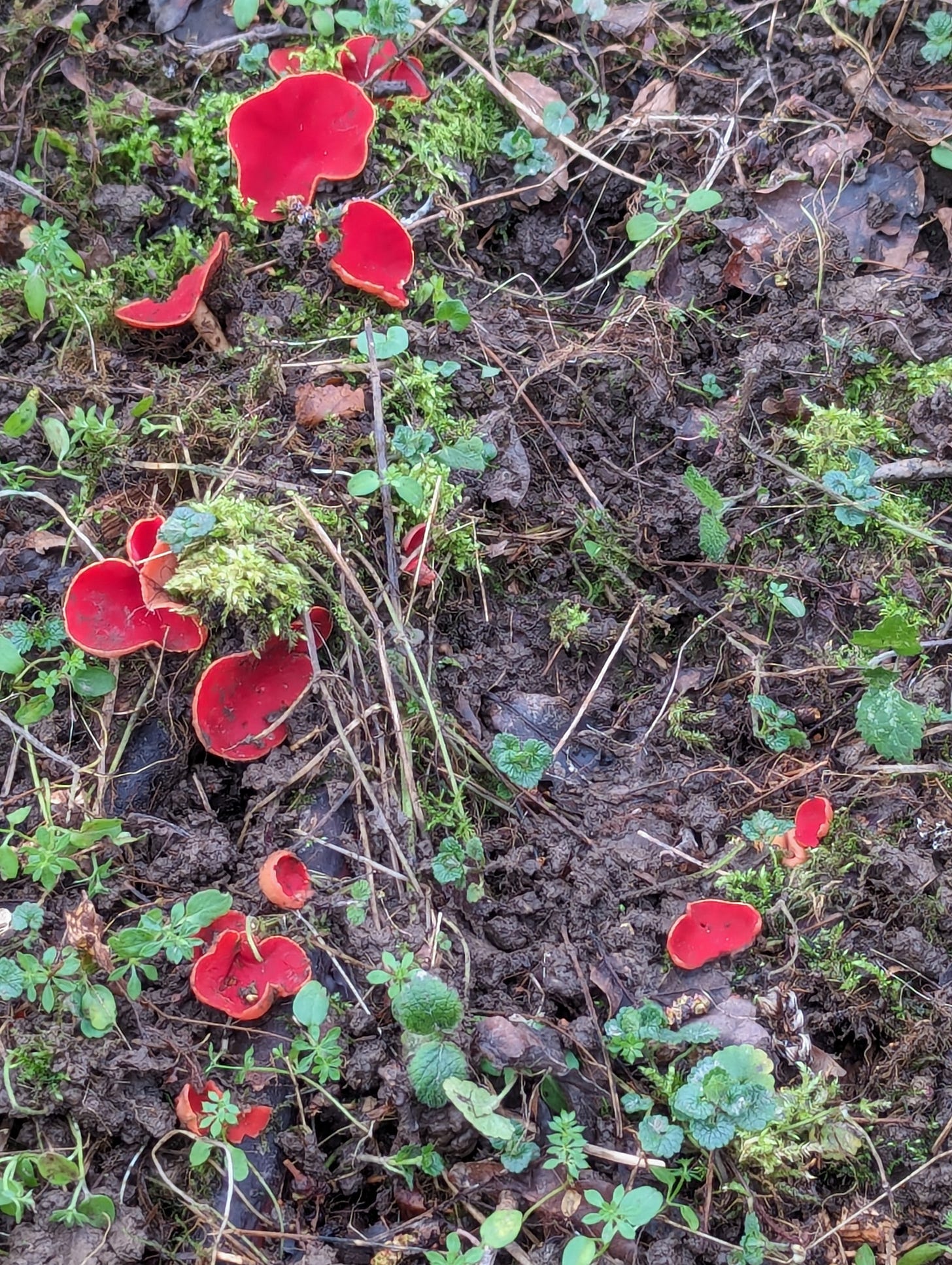Nature’s Blue Hour: Jess Groenendijk on Wild Places, Wonder, and Writing
An interview with Jess Groenendijk, a biologist turned nature writer and photographer. From tracking otters in Peru to mushroom marvels in Zambia, Jess invites us to reconnect with the wild.
Meet Jess Groenendijk, writer of Nature’s Blue Hour. She built her career as a biologist and now explores wild places with a camera.
In this interview, you’ll hear how she tracked giant otters in Peru, woke up to a carpet of Termitomyces mushrooms in Zambia, and balances science with a poet’s wonder.
Jess grew up in Colombia, Burkina Faso, and the Netherlands and now shares a 17th-century farmhouse south of London with three generations of her family.
You’ll learn what drives her curiosity and why she invites you to protect our planet in her newsletters Beastie and The Nature of Things.
Early Inspirations
You’ve lived in places such as Colombia, Burkina Faso, and Tanzania. How did all that moving around spark your love of the outdoors?
I’m incredibly fortunate that my parents have always been intrepid and enterprising. Having two small kids never hindered them in any way. My father’s work for international development organisations took them to Bogota, Colombia, where I was born, and later to Burkina Faso and Tanzania.
I loved nothing more than going on long road trips, especially to the wildlife-rich National Parks. In between, my father fulfilled a lifelong dream by building a ferro-cement boat and setting sail with the family for two years. My brother and I spent most of our waking hours swimming, snorkelling, and beach combing.
I’m sure these places and associated travel had a lasting impact on me.
I read in an article somewhere that children who experience Nature before the age of 11 are more likely to grow up caring about wildlife and natural surroundings. Even if they don’t remember, kids subconsciously absorb and retain impressions of their environment like sponges. They become imprinted.
I also grew up without a TV or any other screen. So, Nature was the source of all fun and adventure, and discovery for me. That kind of unfettered childhood can’t fail to engender a close bond with the natural world, and I will always be grateful to my parents for the gift.
Can you recall a moment in your childhood or early career when you realized you wanted to work in or write about nature?
I was about 12 years old when I decided I wanted to be a wildlife vet when I grew up. I loved to read, and it was the books by Gerald Durrell and James Herriot that did it for me. Those same books, along with many others, usually featuring animal protagonists, also sparked a passion for the English language.
I published my first poem, about our cat, in my school’s literary magazine around that time. Seeing my work and name in print was thrilling. I recall winning an award for English shortly after and needed no more encouragement: I’ve been writing on and off ever since.
However, rather than becoming a vet, I eventually embarked on a career in wildlife conservation, focusing on understanding and protecting wild Nature, as well as managing human activities in natural environments.
Storytelling and Photography
After years in the field as a biologist, what drew you into storytelling and photography?
I am drawn to creativity. Sadly, I can’t sing, play an instrument, or paint to save my life. But the numerous books I read as a child and the camera I received as a birthday gift when I was about 14 opened up the possibility of expressing myself through writing and photography.
And because I have always been able to lose myself in a good book or a stunning photo, I also understood how powerful both can be in generating emotion and empathy in others, in opening eyes and hearts to new worlds. Especially when combined.
Moreover, when you have once-in-a-lifetime experiences in the field, you want first to record them for yourself and then to share them. Both are ways of re-living them, which is wonderful. However, by sharing them, I also hope to bring others pleasure and to inspire a sense of curiosity, awe, and love for Nature.
When you’re out with your camera, how do you recognize the shot or story you really want to capture?
I’m very much an amateur, but I think the best stories and most compelling photos emerge from full engagement in the experience, an understanding of the subject, and diligent practice.
Over time, you begin to develop an instinct for what works. And when you spend days or weeks observing a landscape or animal, you learn how to show it to advantage.
By way of example, I recently saw a trio of photos of a river scene shared by J. Paul Moore on Substack.
The first was taken on a sunny day, which produced deep shadows and harsh contrasts. The second was shot under an overcast sky, but the river surface in the foreground was too busy. The final picture was taken on a still morning with soft light.
That photographer recognised what he wanted from the start, but it took three attempts to achieve the dreamy composition he had envisioned. The last shot speaks volumes.
As with photography, where composition, light, and exposure make the image, writing, too, requires that essential components align. When they do, you’ll know you have a good story.
Fungal Discoveries
Your poem about waking up to Termitomyces mushrooms in Zambia was excellent. What details from that night stand out most in your memory?
Thank you for the kind compliment! I rarely write poems, and suffer from impostor syndrome when I do. If the poem is any good, it’s only because I was inspired by what I witnessed.
My husband and I were staying at a tourist lodge in Kasanka National Park, and I recall walking from our rondavel along a dirt path to the dining area for meals, and vaguely noticing a termite mound under a shrub each time I passed by.
One night, it rained steadily for hours, but the sky was clearing by the time I headed to the lodge for breakfast. To my utter astonishment, the innocuous termite mound had erupted overnight into a mushroom city.
It seemed inconceivable that mushrooms could grow so fast and in such profusion.
And each was a bright, pure white. Nature had never seemed so exuberant, so alive, and yet so fragile all at once. The sight filled me with joy and hope.
Beyond Termitomyces, have any other surprising fungal finds caught your eye recently?
Fungi are endlessly varied and fascinating. The mushrooms I just described, even in their abundant perfection, would have paled into insignificance beside the largest Termitomyces specimen I’m ever likely to see.
My husband purchased it from two small boys on the road in rural Zambia for the going rate of 5000 Kwacha, or about USD 1.60 (at the time).
The photo shows just how large it was. Enough to feed a camp of twenty people, as I described in my post here on Substack.

And then there was the time I came across a cluster of tiny red mushrooms on a damp rainforest trail at the Manu Wildlife Centre in the Peruvian Amazon. They glowed like drops of fresh blood. A friend thought they might be Vermilion waxcaps (Hygrocybe miniata), but I would love your readers to confirm that for me.
Writing Balance
In your Beastie and Nature of Things newsletters, you balance wonder and concern. What keeps that balance for you when you write?
The future of my children, who are now young adults on the cusp of independence, is always uppermost in my mind.
Between 1970 and 2020, the average size of vertebrate wildlife populations worldwide fell by a catastrophic 73%.
When I first read this statistic, I felt like I’d been punched. All the more so because this decline happened within my lifetime (I was born in 1972). Which means that I’m partly responsible. And we’re talking about the world’s most charismatic species here, the tigers and dolphins and frogs of this world.
If we can’t protect the cuddly or dramatic ones, what hope is there for more obscure and less loved species?
And what do the next 50 years hold in store for us? What kind of planet are we leaving our children and grandchildren? For their sakes and for future generations of all life forms, it is imperative that we restore and safeguard the integrity of the natural world.
To achieve this, we must understand, deep in our bones, that Nature’s fate is ours, because we are inseparable from Nature. It’s become a cliché, but I can’t say it more plainly: we are Nature and Nature is us.
Storytelling, whether through words, images, or other means, can and should evoke a strong sense of responsibility and urgency, as well as compassion and intimate connection.
This is why, through my writing and photography, I strive to share both the joy and beauty of Nature, and of lives filled with Nature, as well as our fear, regret, guilt, rage, despair, and grief (so many emotions!) at what we have inflicted on the natural world. I believe and hope this tension between reverence and profound concern is what motivates each of us to act in the myriad ways that are possible and necessary.
Family and Home
Living with three generations under one roof must be lively. Does that family dynamic influence how you experience or photograph nature?
Most of us are passionate about Nature and spend a lot of time outdoors. My parents have had a huge influence in that regard. Before I moved to the UK from Peru in 2021, I didn’t realise a gardener was lurking inside me.
Fast forward four years, and like my mother, I can’t relax now on the terrace without weeding around the base of my chair. But I’ve been so busy discovering the delights of creating and growing a garden, I haven’t yet had the opportunity to photograph it.
It was my father who encouraged my brother and me to take up photography. He’s a keen and very good photographer himself, especially of people and landscapes. He’s 82 now, but still regularly goes for photography walks and hasn’t lost his eye for composition, light, and story. He often reports interesting Nature finds, like these cup-shaped fungi.
My brother and husband are rewilders. Together, we have planted several hundred trees, created a wildlife pond, and installed nest boxes for owls and other birds.
The main problem I have is that there is so much to do and so many things I want to explore that I don’t set aside enough time to quietly immerse myself in Nature. I hope that my old passions of writing and photography will help to remedy this.
Looking Ahead and Advice
What projects, travels, or new naturalist skills are you most excited to explore next?
I recently joined Substack and rekindled my writing after a five-year hiatus. I can’t believe it took me so long to discover this place! I’ve already subscribed to over 150 publications. So much of the writing here is lyrical, authentic, courageous, and intriguing, or all the above. It’s a revelation, and, frankly, a bit overwhelming.
Though I know I’ve found my calling –writing for Nature– I feel like I haven’t quite identified my niche or how best to go about it. That’s what I’m most excited about right now: exploring, through Substack, how I can inspire a will to protect and regenerate our true home in new audiences.
If someone is just discovering mushrooms or wildlife photography, what one tip would you share?
I’ve been photographing wildlife and landscapes, on and off, since I received my first SLR camera at the age of 14. Best birthday present ever. However, I was simultaneously too impatient to start photographing and too lazy to learn how to use it properly. I didn’t think there could be much to it. So, for the longest time, I just snapped photos, and if they were good, it was mostly because I’d been lucky.
One morning, after spending hours on a lake taking what I imagined would be breathtaking images of giant otters and herons, I was dismayed to find only mediocre shots of blurry and poorly exposed animals. I was so frustrated with myself. I also couldn’t figure out what had gone wrong.
That was the push I needed to finally do my research and begin experimenting with depth of field, shutter speeds, and exposure, adjusting the settings, and recording and comparing the results.
All this is a roundabout way of advising a beginner to do the obvious: take the trouble to really get to know your camera (each has its foibles) and understand how its functions interact with one another.
Once you’ve got a proper grasp of the basics, your photography will improve significantly because you’ll know how to extract the best out of an opportunity. And just because mushrooms are generally small, that does not mean they are easier to photograph. Photographing small is a whole art in itself, one I’m only just beginning to master.
Many thanks to Jess Groenendijk for sharing her incredible stories, insights, and deep reverence for the natural world. To keep following her adventures and reflections, be sure to subscribe to her Substack: Nature’s Blue Hour








